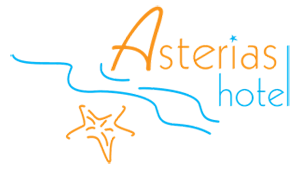Location
Chalkidiki’s capital is Poligiros that is located in its geographical center, just 69 kilometers from Thessaloniki. The transport is mainly by cars or buses and the nearest airport is “Macedonia Airport”, outside the city of Thessaloniki.
Sithonia is Chalkidiki’s second peninsula. The rough and impressive scenery of the middle finger excites nature-lovers and tourists that seek a shelter from civilization’s traps..
The beaches provide a great variety – a succession of fishery villages, picturesque harbors, desolate beaches of every size surrounded by trees and bushes. Sithonia is a musical concert of blue and green: there are not enough adjectives to describe all the different shades and tones of the flora, the sea and the sky that you will be able to view.
But you will not have to spend ‘spartan’ vacations in Sithonia. There are hotels of every quality of which you can choose the most suitable for you, including the one and only luxury hotel in Chalkidiki, with a golf course of 18 holes among others. You can find tennis courts and sea sports everywhere while horse-riding in the pine woods is an experience that you can’t have anywhere else in Greece. As for the nightlife and the rest of the expected vacation entertainment, Sithonia manages to combine the traditional hospitality with modern entertainment.
Porto Koufo
Porto Koufo is the bigger and safer natural seaport of Greece. Its name (Kofos limin) is even mentioned by Thukidedes. Its dimensions are: maximum length 1.600m., max width 550m., maximum depth 8-23m., access opening 300m., access depth 10-33m. and 5,5-27m. In its rocky and steep coasts there are cave openings inside and visitors can enter them by boat. An interesting cave is located in the northeast side of the seaport, in the top of the old pit’s incision. Visiting it is almost impossible nowadays due to the incision that was made with the quarrying. This cave must have been a place of worship during the Roman years. Later, in order to purify the place, the Christians painted prominent red crosses in the cave’s ceiling.
Kofos limin, a place full of memories. Here, according to the legends, lived Proteas with his daughter, Toronis, and this is also where Proteas used to bring the flocks of Poseidon’s seal.
The seaport’s depth was unknown, but here were a tunnel’s entrance, that, according to the legends, extended up to Egypt, and in particular in Faros island. Hercules also passed from here here and fought Poseidon’s sons, Poligono and Tilegono, and beat them.
History
Chalkidiki, according to findings from the prehistoric era in the Petralona sight, was inhabited approximately 700.000 years ago. You can find there the Petralona cave, which is the birthplace of some of the greatest anthropological findings. The discovery of the Neanderthal skull, which is dated to 500.000 years, draw the public interest and made the Petralona cave a place of constant scientific research.
Settlements froμ the Late Stone age and the Bronze age, are located in the west and central Chalkidiki, while many towns flourished during the centuries and one of the most important was Olinthos (archaeological findings in Olintho, Potidea, Stagira and Toroni). In 384 BC the great philosopher Aristotle was born in Stagira, who was the teacher of Alexander the Great. Chalkidiki got its name from the town of Chalkis located in Evoia and people settled in the area during the 8th και 7th century BC. Kassandra got its name from Kassandros, the king of Macedonia, Sithonia from Sithon (son of Poseidon) and Athos from the mythical giant Athos. In the 9th century the first monastic community was created in Athos. Today, the monastic state of Mount Athos (Agio Oros), functions as the Christianity’s ark, with Byzantine monasteries and treasures, caves, monks and pilgrims, a “church-mountain” for the Christian Orthodox Church.



